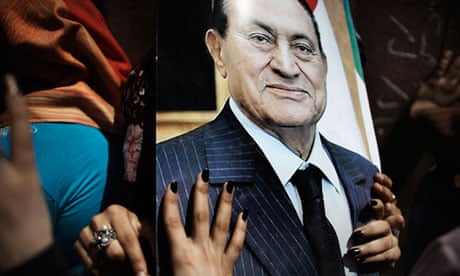Mubarak takes office in 1981 after his predecessor, Anwar Sadat, is assassinated by Islamic militants during a military parade. Mubarak, Sadat's vice-president, escapes with a minor hand injury.
In 1981, Mubarak implements emergency laws as part of his battle against militants and expands police powers.
In one of his first moves, Mubarak says Egypt will stick to the 1979 peace treaty with Israel, the first by any Arab nation with the Jewish state.
Mubarak becomes a major mediator in the Arab-Israeli peace process, remaining a consistent US ally bolstered by billions of dollars in American aid.
During the 1990s, militants launch an uprising aimed at setting up an Islamic state. Gunmen attack police, assassinate politicians and target foreign tourists, a key source of revenue. In 1995, militants attempt to assassinate Mubarak as he visits Ethiopia.
Mubarak responds by arresting thousands, crushing the movement by 1997.
Mubarak's government subsidises goods such as bread, cooking oil and gasoline. When bread riots turn violent in 2008, he fires up military ovens to help quell discontent.
Mubarak engineers constitutional amendments that, according to critics, guarantee ruling-party victories in elections. One bans religious political parties, blocking the Muslim Brotherhood from officially participating in political life.
Mubarak is re-elected three times in staged, one-man referendums in which he routinely won more than 90% approval.
In 2005, Mubarak allows the first ever multi-candidate presidential election, which he wins easily over 10 other candidates amid charges of voter fraud and intimidation.
The 2010 parliamentary elections are widely deplored as rigged, and the Brotherhood responds by withdrawing its candidates, who ran as independents, from a second round of voting.
On 25 January 2011, thousands of anti-government protesters clash with police in Cairo during a Tunisia-inspired demonstration to demand Mubarak's removal. The day marks the start of the Arab spring in Egypt.
After three weeks of massive protests against his rule, Mubarak resigns on 11 February 2011, handing power to the military.
On 13 April, authorities detain Mubarak and his two sons in an investigation into corruption, abuse of power and the killing of protesters. A month later, Mubarak is ordered to stand trial on charges of corruption and conspiracy in the deadly shooting of protesters.
Mubarak's trial opens in Cairo on 3 August 2011. From the defendant's cage, Mubarak denies all charges against him.
On 22 February 2012, Mubarak, who had rarely spoken during the trial, turns down his last chance to address the court during the defence's final arguments.
